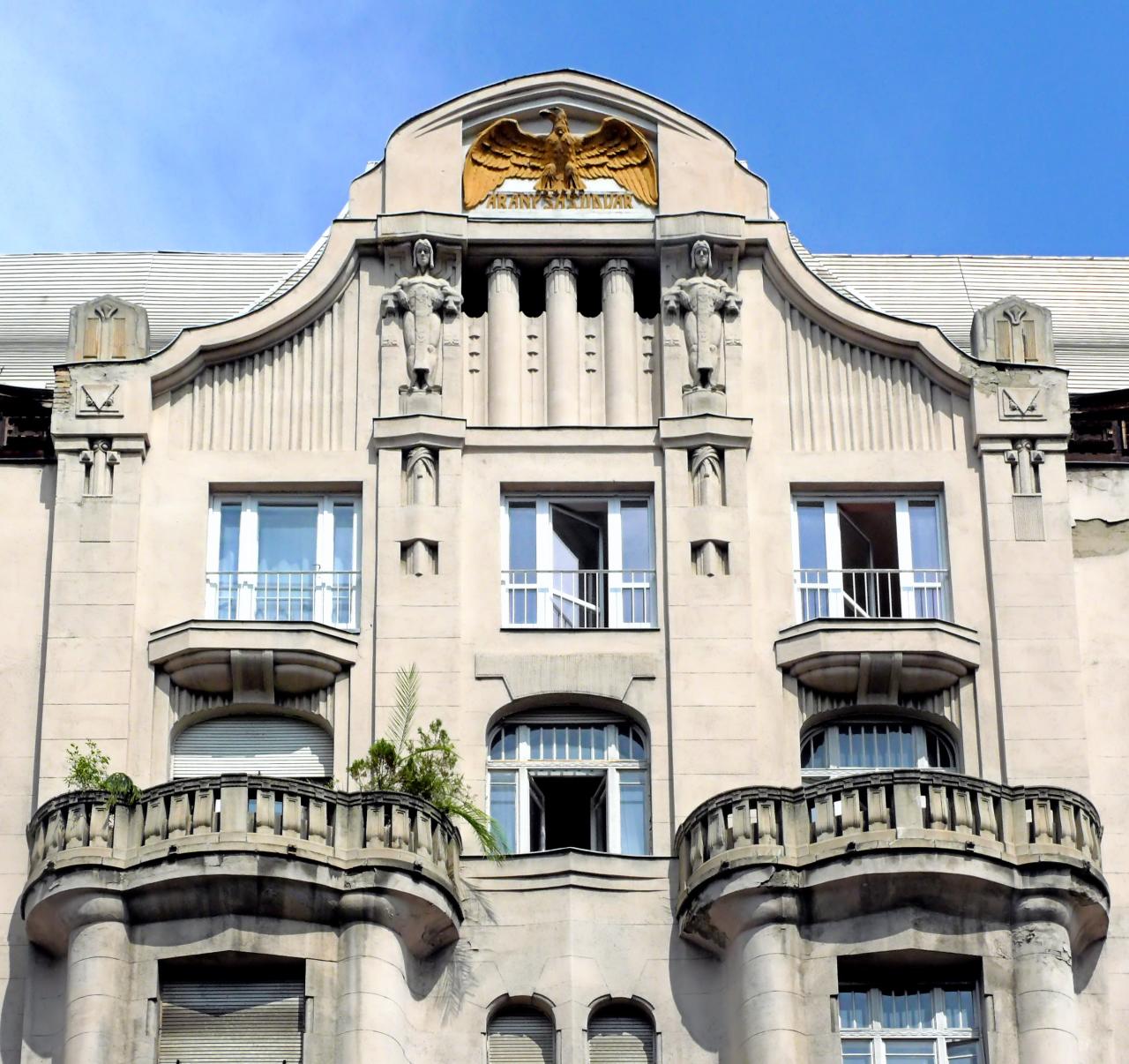#2716. Art Nouveau Façade with Neoclassical Elements: Symmetry, Sculptural Decor and Monumental Eagle Pediment
Before us stands an expressive example of early 20th century architecture, gravitating toward the Art Nouveau style with neoclassical elements. The building's façade features a symmetrical composition with the characteristic flowing, curvilinear silhouette in the upper section typical of Art Nouveau.
The central accent of the façade is a monumental pediment with a gilded eagle — a symbol frequently used in the architecture of that period. On both sides of the central axis are stylized sculptural figures integrated into the vertical articulation of the façade, emphasizing the upward aspiration of the composition.
Particular attention is drawn to two semicircular balconies with massive balustrades, creating a plastic play of light and shadow on the lower floors. The rhythmic arrangement of windows with elegant casings enhances the overall harmony of the façade. The light-colored stone used in the finishing gives the building a noble appearance and accentuates the architectural details.
Vertical pilasters, relief elements, and geometric motifs in the decor reflect the architects' desire to synthesize Art Nouveau innovation with classical traditions. The façade demonstrates a combination of monumentality and decorative sophistication characteristic of Central European architecture from the beginning of the last century.
